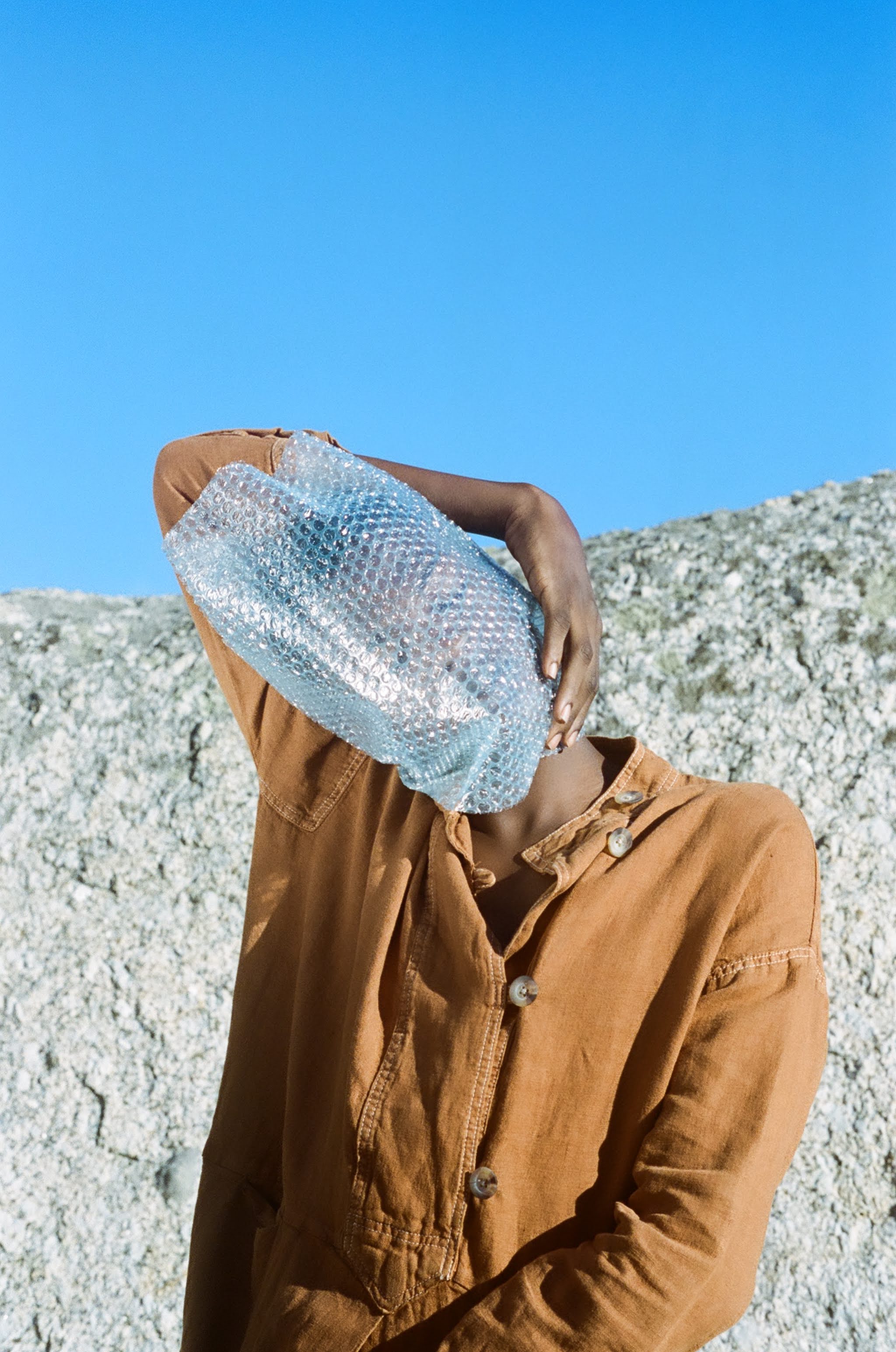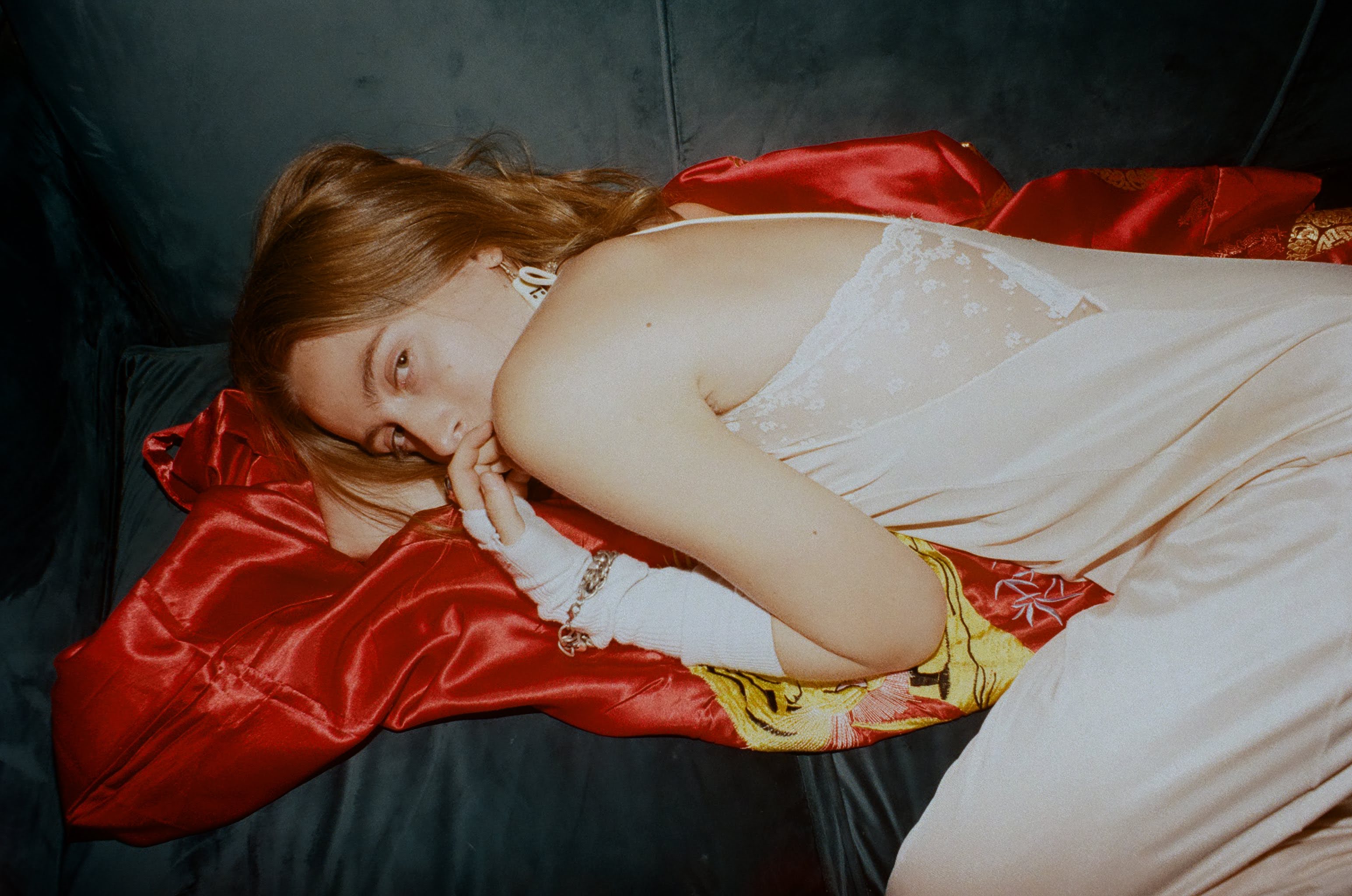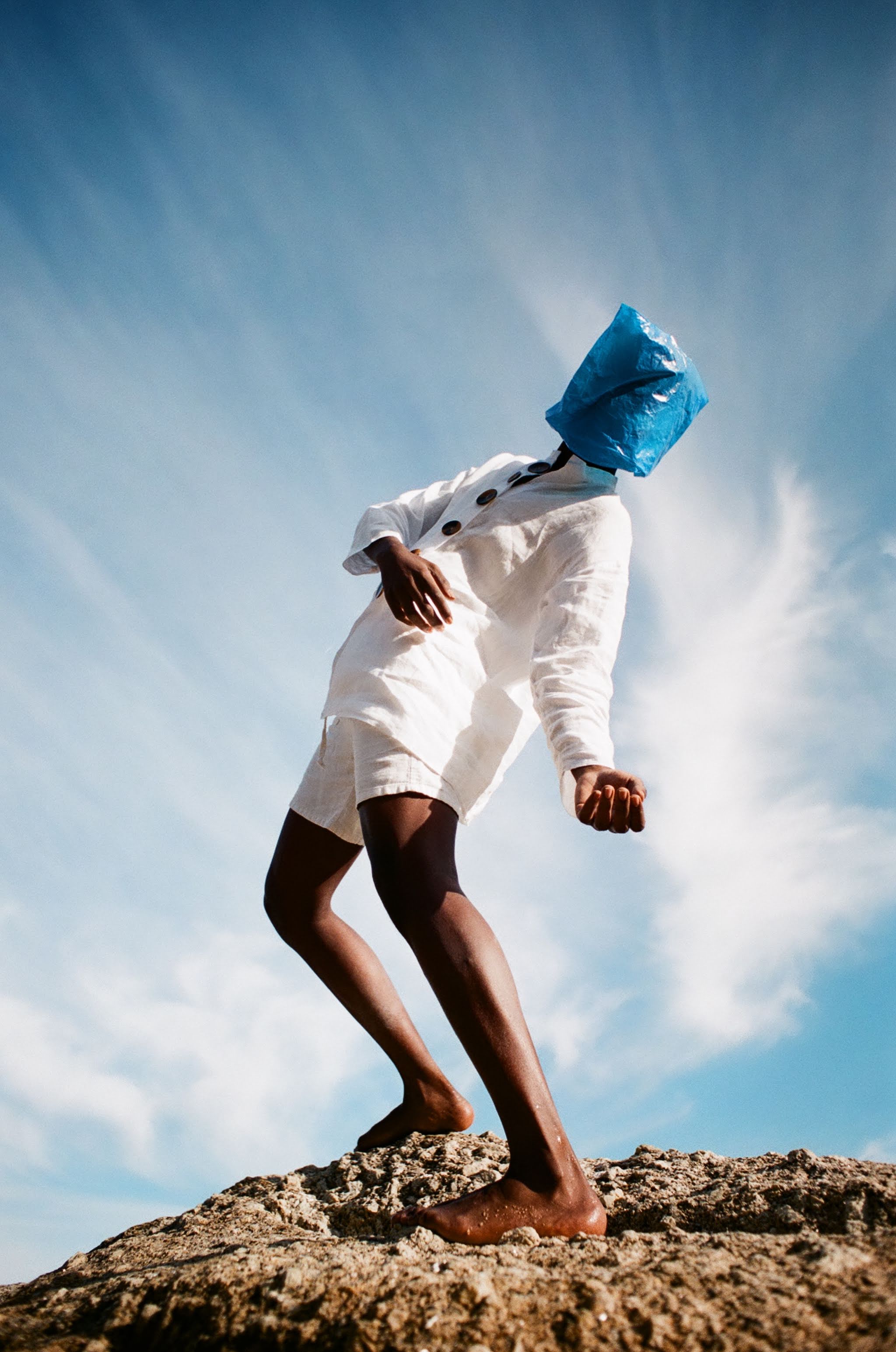Cape Town based photographer Andrea Loupis’ approach to photography is set around the idea that once an image leaves her control it is up to the viewer to draw their own interpretations.
Although she encourages this highly subjective approach to interpretations of her work it is evident that there are certain themes which occupy her mind. As she puts it, “I find myself drawn to the intimate, the unexplored and the incongruous.”
‘Plastic Never Dies’ shot in collaboration with Alexa Bortz is one such series which aims to directly address the tumultuous relationship between the human race and planet earth. “We were inspired by the relationship between water, plastic and the human form,” Loupis explains.
Plastic plays a central role in this project and is used as both a prop and styling aid. This is done to show that however integral plastic may be to our lives, the material is undeniably a major contributor to destroying our natural environment. With ‘Plastic Never Dies’ set to breath-taking Cape Town nature backdrops, Loupis and Bortz aim to challenge their viewers, many of whom may be perpetrators of the very issue being raised; the over-consumption of plastic.

Loupis’ approach is rather coherent, with telltale signs of her distinct stylistic choices scattered across her catalogue of work. Notably, Loupis’ images are highly saturated due to the type of film she likes to shoot on. She explains that this is a conscious approach due to the fact that she is more drawn to saturated tones as she struggles to appreciate her film if the results turn out desaturated and grainy. This functional choice compliments Loupis’ work immensely as her compositions can seem quite minimalistic. Very rarely will an image be layered with a plethora of colours but similar to the literary minimalist style of Raymond Carver’s writing it is within this minimalist approach that Loupis’ work shines brightest.
Just as Carver’s writing style is to an extent about his sparse use of adverbs, mystifying readers with his knack for word economy especially in his short stories, Loupis’ work is powerful because of its relatability. There is no need for extravagant props, styling or as mentioned above, a striking display of colours because invariably her photos are about the people she photographs.
Furthermore, by limiting the number of colours in her photographs far more attention is drawn to the colours she does decide to include. This can be seen used to great effect on her series ‘Channelling Madonna’ where pops of blue and red are used effectively to contrast the almost uniform ‘nude’ colour scheme presented by the model and her dress.
Over the next couple of weeks Loupis aims to further expand on her environmentally conscious work with shoots planned around the central themes of pollution, waste, and the destruction of our planet. She is however trying to keep her content fresh by also exploring these themes in relation to the fashion industry, furthering the conversation surrounding one of the largest polluting industries.






















































